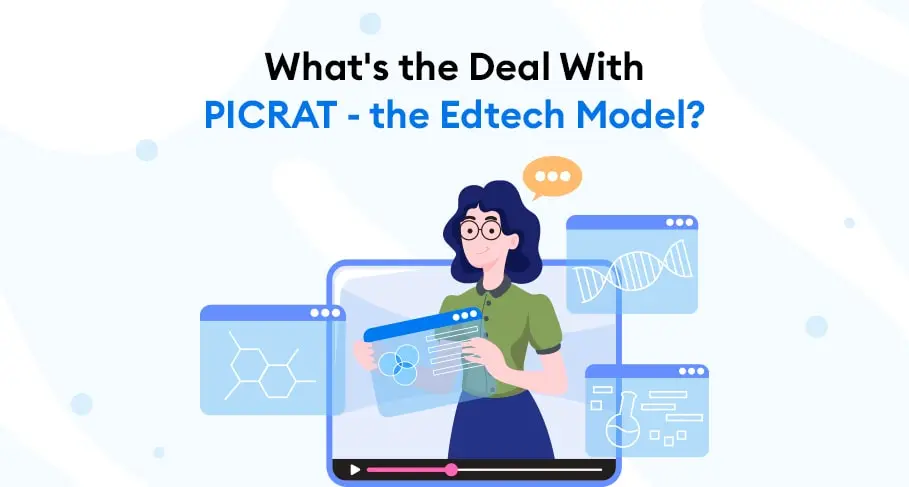Today, there is an increase in technology use within education and around the world. As an educator, we must think about how we can implement technology into our lessons to help prepare students for the next steps in their lives. Kimmons states that educators cannot foresee how their students may be expected to use technologies in the future or how technologies will change during their careers (2020). Thus, students need to learn multiple technological skills that will allow them to achieve high-quality work in schools now as well as prepare them for their future.
In 2006, Hughes, Thomas and Scharber manifested a way to sort lessons on a scale that measures the teacher’s use of technology and the student’s relationship to technology in a lesson. This grid measures the students’ relationship to technology as “Passive, Interactive, Creative” and measures the teacher’s use of technology as “Replace, Amplify, Transform”. This grid of technology used in the classroom is known as PICRAT (2006). This grid to look at technology use in the classroom is a useful tool for the teacher to reference when creating lessons and growing to become an effective teacher.
Many teachers are continuing to learn about properly using technology in their classrooms to engage student learning. The PICRAT grid can be referenced to understand where a lesson with technology is on the grid and how you can enhance the lesson. This grid can be found in image 1 (below). When looking at a lesson, find out what the desired goal is for the lesson, plan how the students will achieve this goal, and find where technology can fit into this lesson and how it can enhance the lesson from a pen and paper assignment.

You might be wondering how this can look in a classroom lesson. In one example, the Minnesota Department of Education has a high school requirement to have students examine Slavery, Civil War and Reconstruction. Examine how debates over slavery, freedom and rights during and after the Civil War influenced the status and rights of European immigrants, Mexicans and Mexican Americans, women, Asian Americans and/or Indigenous people in comparison to African Americans (2021). Students can reach the Creative and Transformative category of the PICRAT grid by learning and researching about Slavery and the Civil War as well as a social group such as Asian Americans. They can then create a website to share their findings with fellow students and others around the world potentially to create an informative website that shares connections between slavery and Asian Americans. By creating a website, it transforms student learning with the use of technology, as they would not be able to share their findings with others in their community without technology.
In addition, students could also use technology on a similar assignment to interview and record their findings with their local community. Students may also showcase their information from a video presentation to share with their peers or with other schools to compare findings. Technology has opened many doors in education and communication.
The PICRAT grid created by Kimmons does not mean that every lesson has to be on the top right (CT) portion, but is a good reminder to allow teachers to evaluate and reevaluate lessons with technology to get a grasp of how students are learning and how technology is enhancing students learning and engagement. Not every lesson can be or is perfect, but using the PICRAT model does allow teachers to grow and gain a better understanding of how technology is incorporated and enhances student learning.
Resources:
Hughes, J., Thomas, R., & Scharber, C. (2006). Assessing technology integration: The RAT – Replacement, Amplification, and Transformation – framework. In Proceedings of SITE 2006: Society for Information Technology & Teacher Education International Conference (pp. 1616–1620). Chesapeake, VA: Association for the Advancement of Computing in Education.
Kimmons, R., Graham, C., & West, R. (2020). The PICRAT model for technology integration in teacher preparation. Contemporary Issues in Technology and Teacher Education, 20(1).
Minnesota Department of Education. (2021, December). Minnesota K-12 Academic Standards in Social Studies – 2021, Commissioner Approved Draft. Social Studies. Retrieved June 27, 2023, from https://education.mn.gov/mde/dse/stds/soc/


